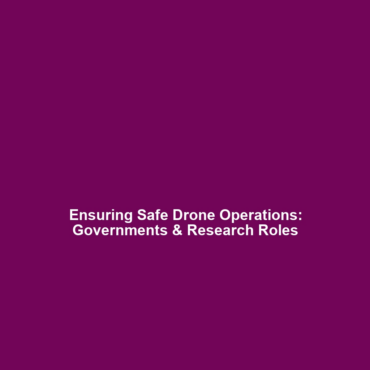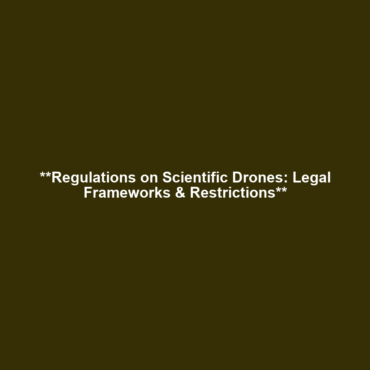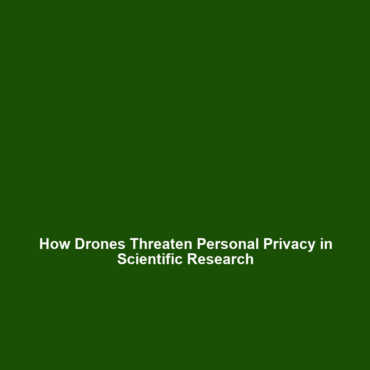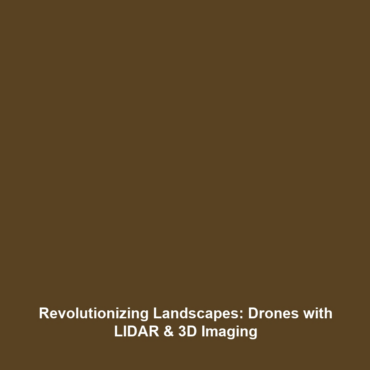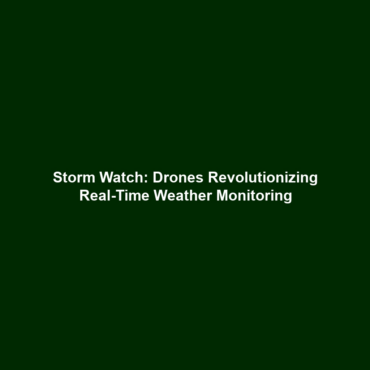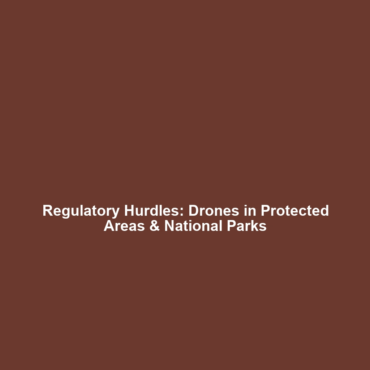The Role of Governments and Research Institutions in Ensuring Safe and Legal Drone Operations
Category: Drones in Science
Introduction
The role of governments and research institutions in ensuring safe and legal drone operations is increasingly significant as the use of drones expands across various scientific fields. These entities must establish regulations and guidelines to enhance operational safety while supporting the technological advancement of drones. This article explores how both governments and research institutions shape legal frameworks and operational safety standards, ensuring the integration of drones into scientific research without compromising public safety or privacy.
Key Concepts
Understanding the key concepts surrounding the role of governments and research institutions is essential for grasping how they influence safe drone operations. Key principles include:
- Regulatory Frameworks: Governments develop laws that dictate where, when, and how drones can be flown.
- Research Collaboration: Institutions engage in partnerships to study drone technologies and facilitate their implementation in scientific research.
- Safety Standards: Establishing guidelines for drone operations minimizes risks associated with flight, including collisions and accidents.
These principles collectively contribute to the overarching goal of fostering responsible and innovative uses of drones in various scientific endeavors.
Applications and Real-World Uses
The role of governments and research institutions in ensuring safe and legal drone operations has led to numerous real-world applications, particularly in the field of Drones in Science. Some notable examples include:
- Environmental Monitoring: Drones are utilized in areas such as wildlife conservation and climate studies, with regulations ensuring that their use does not disturb natural habitats.
- Disaster Response: Government guidelines help coordinate drone operations in disaster-stricken areas, providing essential data for recovery efforts.
- Research Data Collection: Research institutions employ drones to gather data efficiently, ensuring compliance with safety standards set by governmental bodies.
Current Challenges
Despite advances in drone technology and operations, several challenges persist in ensuring that governments and research institutions effectively maintain safe and legal drone operations:
- Regulatory Gaps: Existing policies may not address rapidly evolving drone technologies.
- Public Safety Concerns: Balancing innovation with the need for privacy and safety remains a challenge.
- Funding Limitations: Research into safe drone operations may lack adequate financial support from government bodies, impacting advancements.
Future Research and Innovations
As the drone industry continues to evolve, future research and innovations promise to enhance the role of governments and research institutions in ensuring safe operations. Potential areas of development include:
- Autonomous Flight Technologies: Innovations in AI could lead to smarter and safer drones capable of real-time decision-making.
- Enhanced Communication Systems: Improvements in drone communication can contribute to safer interactions with manned aircraft.
- Collaborative Frameworks: Developing partnerships between governments, tech companies, and research institutions can foster innovation while adhering to safety guidelines.
Conclusion
In summary, the role of governments and research institutions in ensuring safe and legal drone operations is essential for the responsible integration of drones into scientific practice. As we witness technological advancements, it is crucial for these entities to remain proactive in establishing regulations, fostering research, and addressing emerging challenges. For ongoing updates on innovations and regulatory changes impacting Drones in Science, visit our related articles section.
